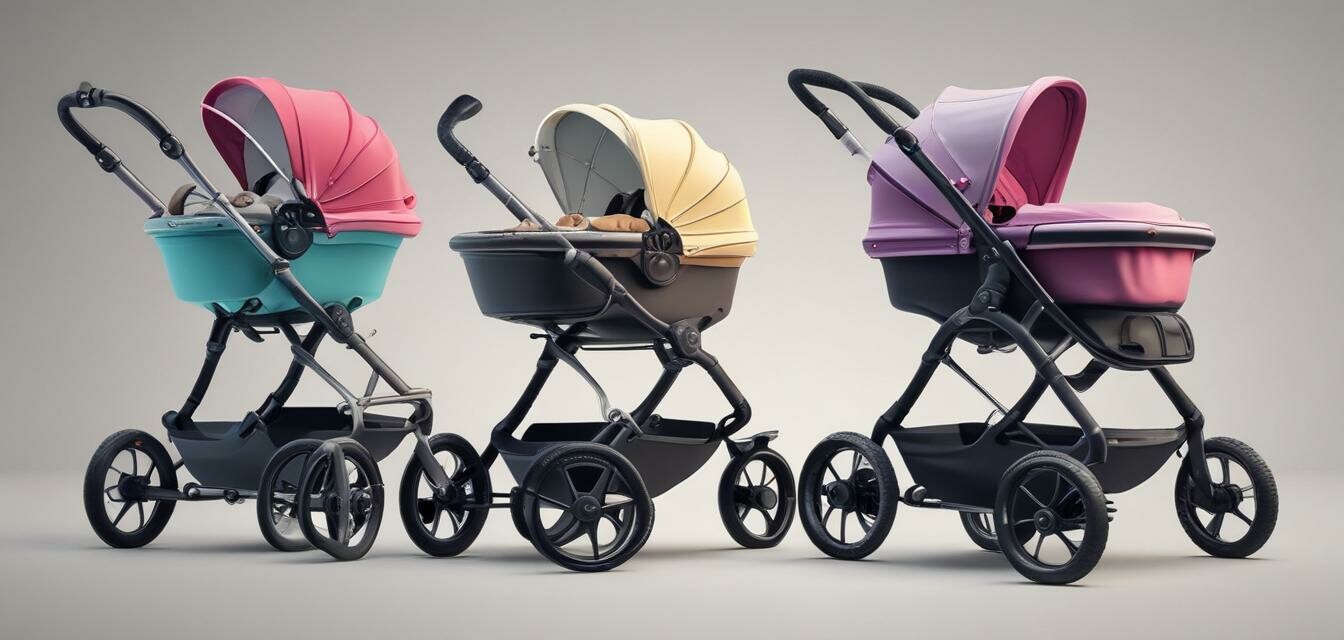
Navigating Stroller Weight Limits: What You Need to Know
- Understanding weight limits is crucial for baby safety.
- Different stroller types come with varying weight capacities.
- Choosing the right stroller involves evaluating your lifestyle and needs.
- Regularly check for manufacturer recommendations and guidelines.
- Consider future use and growth when selecting a stroller.
As parents, one of the most important choices you'll make is selecting the right stroller for your little one. A key factor that often goes overlooked is the weight limit of strollers. Knowing these limits not only ensures your child's safety but also maximizes the functionality of your stroller. In this guide, we'll explore stroller weight limits, their implications, and how to choose the best stroller that meets your family’s needs.
Why are stroller weight limits important?
Stroller weight limits are established by manufacturers for a reason. They ensure that the stroller operates safely and efficiently, protecting your child from potential hazards. Here are some reasons why understanding weight limits is essential:
- Safety: Exceeding the weight limit can compromise the stroller's stability, leading to accidents and injuries.
- Longevity: Adhering to weight limits can prolong the life of your stroller by preventing excessive wear and tear.
- Functionality: A stroller operating within its weight limit will provide a smoother ride for your child, enhancing comfort.
Types of strollers and their weight capacities
Weight limits can vary significantly depending on the type of stroller. Here’s a look at some common stroller categories and their average weight limits:
| Type of Stroller | Average Weight Limit (lbs) |
|---|---|
| Convertible Strollers | 50-65 |
| Jogging Strollers | 75-100 |
| Lightweight Strollers | 30-50 |
| Travel Systems | 50-75 |
| Umbrella Strollers | 40-50 |
As you see from the table above, stroller types differ significantly in weight limits. Knowing these distinctions helps you make informed purchasing decisions.
Factors to consider when choosing a stroller
When looking for the perfect stroller, consider the following key factors:
- Your child’s age and weight: Choose a stroller that can accommodate your child’s current and future growth.
- Usage: Consider how often and where you will use the stroller (e.g., running, traveling, daily errands).
- Storage: Ensure that the stroller can fit in your car and that you have space for storage at home.
- Adjustable features: Look for strollers with adjustable seats and canopies to enhance comfort and practicality.
Tips for ensuring safe stroller use
To maintain safety while using a stroller, consider these practical tips:
- Always check the weight limit before placing your child in the stroller.
- Regularly inspect your stroller for wear and tear, including the wheels and harnesses.
- Be mindful of the stroller’s load; carrying excessive items on the handlebar can affect stability.
- Securely fasten your child with the harness every time.
Frequently asked questions about stroller weight limits
1. How do I find the weight limit for my stroller?
You can find the weight limit on the manufacturer's label attached to the stroller or in the user manual.
2. Can I use my stroller if we are near the weight limit?
No, it is important not to exceed the recommended weight limit, as it can lead to safety risks.
3. What if my child weighs more than the limit?
It's advisable to switch to a stroller with a higher weight capacity or consider alternative transportation options.
Final thoughts
Understanding stroller weight limits is fundamental to ensuring safety and functionality. With so many options available, take the time to find a stroller that fits both your current needs and will grow with your family. For more tips and insights, check out our other related articles in our Buying Guides section, including Convertible Strollers and Jogging Strollers.
Pros
- Ensures safety for your child.
- Maximizes stroller functionality.
- Promotes longevity of the stroller.
Cons
- Limits the options for heavier children.
- May require frequent evaluations as the child grows.